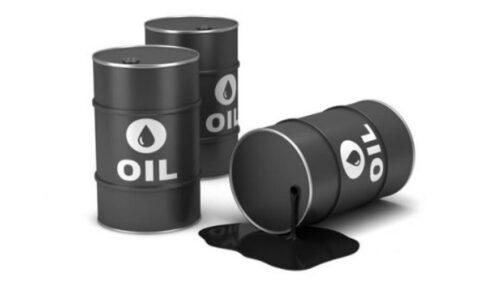Oil prices took a hit on Monday after former U.S. President Donald Trump once again urged the Organization of the Petroleum Exporting Countries (OPEC) to reduce oil prices. His call came shortly after introducing sweeping measures aimed at increasing U.S. oil and gas production in his first week back in the political spotlight.
By early morning trading in Asia, Brent crude futures had fallen by 53 cents, or 0.68%, to settle at $77.97 per barrel, following a modest 21-cent increase last Friday. Meanwhile, U.S. West Texas Intermediate (WTI) crude dropped 50 cents, or 0.67%, to $74.16 per barrel.

Trump’s Push for Lower Oil Prices
On Friday, Trump reiterated his stance that OPEC should lower oil prices, arguing that doing so would financially weaken Russia and expedite an end to the ongoing war in Ukraine.
“One way to stop it quickly is for OPEC to stop making so much money and drop the price of oil… That war will stop right away,” Trump remarked.
In addition to pressuring OPEC, Trump threatened to impose taxes, tariffs, and sanctions on Russia and other involved nations if no progress is made toward a resolution of the conflict. Russian President Vladimir Putin responded by suggesting a potential meeting with Trump to discuss both the war and global energy concerns.
Market Reactions and Volatility
John Driscoll, an energy expert at Singapore-based consultancy JTD Energy, suggested that the recent developments indicate a strategic positioning for negotiations, which has created volatility in oil markets.
“The oil market is likely facing downside risks, especially with Trump’s push to ramp up U.S. production and expand its reach into global markets,” Driscoll said. He noted that Trump’s approach positions the U.S. as a direct competitor to OPEC, potentially challenging their market share.
Despite Trump’s comments, OPEC and its allies, known as OPEC+, have not officially responded to his demands. OPEC+ sources have instead pointed to their existing strategy, which includes a scheduled increase in oil production beginning in April.
Recent Market Trends
Last week, both Brent and WTI crude posted their first weekly declines in five weeks as concerns about supply disruptions due to sanctions on Russia began to ease. Analysts at Goldman Sachs noted that the impact of sanctions on Russian oil output has been relatively limited. Higher freight rates have incentivized the use of non-sanctioned vessels to transport Russian crude, and deeper discounts on Russian ESPO-grade oil continue to attract cost-conscious buyers.
Goldman Sachs analysts emphasized that Western policymakers are more focused on maximizing the discount on Russian oil, rather than cutting its supply completely, as part of their strategy to reduce Moscow’s revenue while maintaining stable global energy markets.
Looking Ahead
With Trump’s renewed pressure on OPEC and his focus on expanding U.S. energy exports, the global oil market remains in a delicate balance. As geopolitical tensions persist and production strategies evolve, traders and investors will closely monitor how OPEC and major oil-producing nations respond to Trump’s aggressive policy stance.


